Airplanes tend to emit greenhouse gases into the atmosphere. This is leading to addition to global warming causes. Moreover, it requires a large amount of fuel to fly. No wonder, aware of the carbon emissions it entails, there are many of us who try to make air travel environment-friendly. Nevertheless, it is never enough, there’s a lot that we cannot change. In fact, even scientists are speculating whether eco-friendly air traveling is possible or not. However, even when we decide to imagine something like that, there’s one particular concept that appears again and again. It is that of electric aviation.
What if electricity is used in place of fuel to power the plane? Though they won’t replace passenger airliners anytime soon, small, zero-emission, electric planes are flying today. An electric aircraft runs on electric motors rather than internal combustion engines, with electricity coming from fuel cells, solar cells, ultracapacitors, power beaming and batteries. Currently flying electric aircraft are mostly experimental demonstrators, including manned and vehicles. Solar riser became the first manned electric aircraft to fly, in the year 1979, in which the electric motor was powered by photovoltaic cells, but it remained in the air for not more than 5 minutes.
The Good
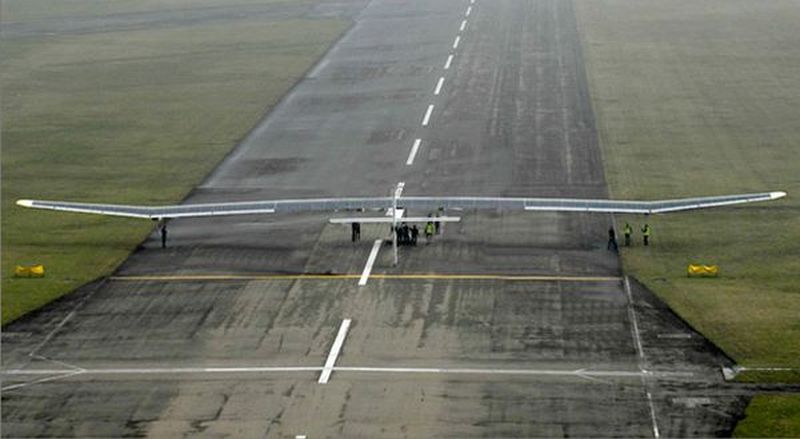
1. Efficiency:
Electric aircraft, when compared with regular planes with combustion engines, are much more efficient. Because of the electric motors used in electric aircraft, they can be 95% efficient compared to 18%-23% efficiency of regular plane engines. And therefore the electric aircraft lose a smaller amount of energy in form of heat. Electric motors are three to four times better at driving an airplane propeller. They are much less noisy and more reliable when compared to combustion fuel engines. Although attempts are ongoing to make electric planes a part of solar powered transportation, at present, there has been little success.
2. Reliability:
Electric aircraft are much more reliable, as they have increased safety due to a decreased chance of mechanical failure and a less risk of explosion or fire in the event of a collision. Since they emit a less amount of heat so they don’t require much amount of cooling air flowing over them (which can slow down the engine due to drag) as combustion engines do, which is a very big deal with airplanes. This have a minimal affect on the speed of the electric airplane turning out to be a great advantage.
3. Quieter:
Due to a better efficiency of electric airplanes, they are much quieter, and can therefore be located nearby residential areas. Because electric planes are quieter, airports can be built closer to destinations, and they are capable of extremely short takeoffs since they don’t have to gradually accelerate to liftoff speeds.
Can this be better?
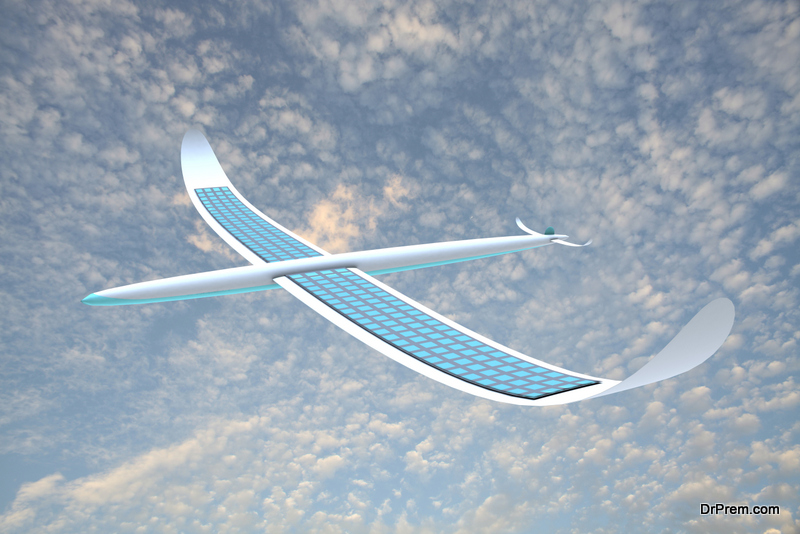 To make the advantages of an electric plane even better:
To make the advantages of an electric plane even better:
Solar-powered airplanes have the advantage of being lightweight in comparison to battery-powered planes. Solar panels could be fixed to the wings of the airplane which can be recharged while in air or on ground. The efficiency of the electric aircrafts can be increased if several small motors are mounted at the edge of wings, blowing air directly over them. This is referred as regenerative soaring.
The bad
Heavy battery:
The electric power motors used in electric aircrafts are heavier for airplanes to stay up in the air. They may be toxic, rupture easily, short-circuit, catch fire and are expensive. These were the main significant disadvantages for an electric airplane.
Can this be avoided?
The disadvantages in an electric plane can be avoided by using some new techniques. To reduce the weight of airplanes, super-lightweight carbon fiber construction techniques can be used. To reduce the required power, a better sailplane design can be implemented. A hybrid solution including a small jet-fuel-powered auxiliary power unit can be brought into use for the longer endurance mission requirements of the largest aviation market segments. This solution provides enhanced efficiency and reduced cost, while avoiding the expense and weight of an all-electric battery-powered aircraft. The high-energy-density of jet fuel will supplement the benefits of electric propulsion. Moreover, lighter batteries like lithium-ion batteries can be used.
The Ugly
Range:
Though there will be environmental and cost benefits associated with the elimination of consumption of fossil fuels and resultant emissions by making use of electric planes, their range will be a hindrance in its implementation. As the range for vehicles on road is 160-400 kms, the same is the case with electric planes.
Why are we so critical?
The current range in electric planes is low (about 100-250 miles), which is quite impractical in case of flying to distant destinations.
The bottom line
Not to speak of the environmental damage, even the world fuel reserves are continuing to dwindle as demand increases. This inversion of the supply/demand cycle will increase the operating costs of all fuel-based vehicles, especially in the aviation industry. Nowhere is this more apparent than in the commercial helicopter market, where the critical role rotorcraft play could be threatened by spiraling fuel costs. The supply of normal crude oil is estimated to last another 40 years with current yearly demand. At some point, increasing demand together with higher oil prices will make alternative resources very attractive.
Some examples of electric aircrafts
1. Yuneec E430
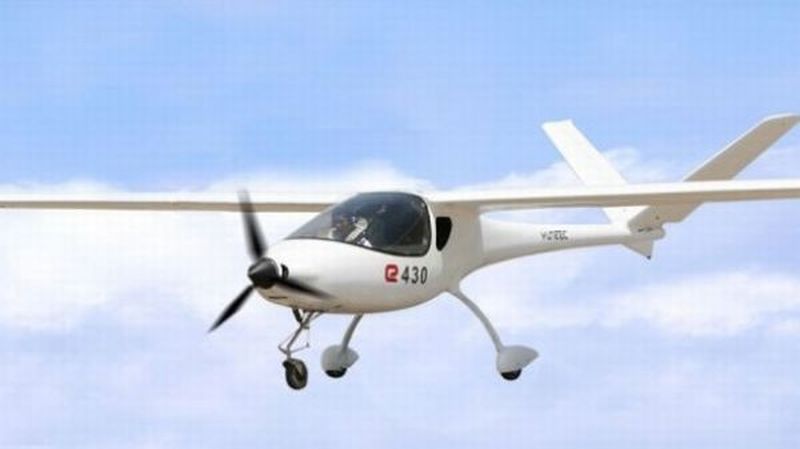 As far as the appearance is considered, the Yuneec E430 looks very much like any other ordinary aircraft, however, the major difference lies in the fact that this aircraft is entirely electric. A domestic 230-volt power supply can charge this aircraft in 3 hours. This twin-engine, single-seat, double aircraft made its maiden flight at the Yuneec factory near Shanghai. Early reports have claimed that this plane is both vibration-free and very quiet. Simplicity is at the core of the design of the E430, it is simple to fly and requires low maintenance. Also, the flight experience is significantly enhanced because of a lack of vibration and low noise. The Yuneec E430 made its international debut at the Oshkosh EAA AirVenture only after undergoing the FAA certification.
As far as the appearance is considered, the Yuneec E430 looks very much like any other ordinary aircraft, however, the major difference lies in the fact that this aircraft is entirely electric. A domestic 230-volt power supply can charge this aircraft in 3 hours. This twin-engine, single-seat, double aircraft made its maiden flight at the Yuneec factory near Shanghai. Early reports have claimed that this plane is both vibration-free and very quiet. Simplicity is at the core of the design of the E430, it is simple to fly and requires low maintenance. Also, the flight experience is significantly enhanced because of a lack of vibration and low noise. The Yuneec E430 made its international debut at the Oshkosh EAA AirVenture only after undergoing the FAA certification.
2. Panthera: Pipistrel’s new four seater electric plane for clean aviation
Slovenian aircraft company Pipistrel has announced that it will soon release three new Panthera electric airplanes. The company has its Panthera line of aircrafts in three variants: hybrid, petrol, and electric. A 145 KW electric motor powers the hybrid version. Pipistrel claims that the Panthera will touch a top speed of 200 knots (230 miles per hour). It will accommodate four people.
3. Cri-Cri
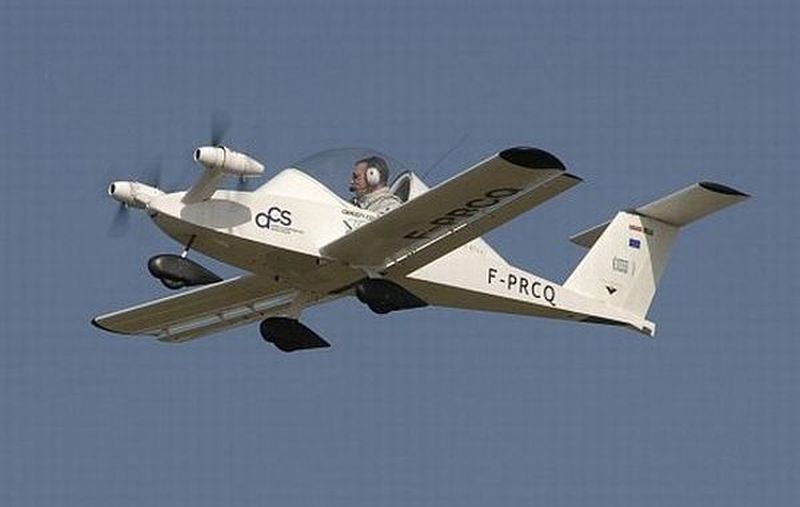 If you want to be Eco-friendly and at the same time love the thrill of high speeds, then you must definitely want to have a look at the Cri-Cri. The Cri-Cri all electric plane holds the record for the highest speed in its category. The French aviation company has launched this zero emission electric aircraft which is capable of hitting a top speed of 162 mph and has beaten the previous record set by an Italian team which was 155 mph.
If you want to be Eco-friendly and at the same time love the thrill of high speeds, then you must definitely want to have a look at the Cri-Cri. The Cri-Cri all electric plane holds the record for the highest speed in its category. The French aviation company has launched this zero emission electric aircraft which is capable of hitting a top speed of 162 mph and has beaten the previous record set by an Italian team which was 155 mph.
The electric motors delivering power to this aircraft are made by Electravia and are capable of generating 35 horsepower. Cri-Cri used only 75 percent of its power to set this new record! The designers and team have claimed that the plane could reach the top speed of about 220 mph if it runs at full power, however, the airframe of this plane can’t withstand such speed. Another reason behind this high speed of Cri-Cri is the reduced air drag.
4. Sonex Aircraft’s DIY electric airplane makes maiden flight
The all-electric Waiex N270DC is designed by Sonex Aircraft using a standard Waiex kit. A 54 KW DC motor powers this aircraft. The motor derives energy from a 14.5 KWh lithium polymer battery system. The company has announced that it will fit motor v4.0 and motor controller V 12.0 in the N270DC in future.
5. Sky Spark
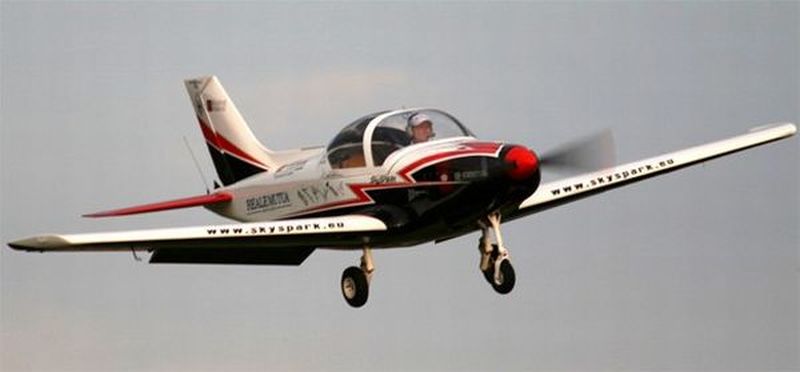 Before Cri-Cri, the Sky Park held the record for the fastest electrically powered aircraft having a top speed of 155 mph. The Sky Park set this record at the World Air Games in Turin, Italy. A 75 kW electric motor using brushless technology delivers power to this plane. Another liquid-cooled 65 kW Valentino synchronous motor by Sicme Motori is attached to this plane which helped it in achieving this top speed. Also, a lithium polymer battery assists the motors. Sky Spark is capable of going beyond the existing record, provided some special modifications are done in its design. The Sky Spark is a joint venture of two organizations: the Turin Polythechnic University and Digisky, which is an Italian start-up company having specialization in R&D innovative technology.
Before Cri-Cri, the Sky Park held the record for the fastest electrically powered aircraft having a top speed of 155 mph. The Sky Park set this record at the World Air Games in Turin, Italy. A 75 kW electric motor using brushless technology delivers power to this plane. Another liquid-cooled 65 kW Valentino synchronous motor by Sicme Motori is attached to this plane which helped it in achieving this top speed. Also, a lithium polymer battery assists the motors. Sky Spark is capable of going beyond the existing record, provided some special modifications are done in its design. The Sky Spark is a joint venture of two organizations: the Turin Polythechnic University and Digisky, which is an Italian start-up company having specialization in R&D innovative technology.
6. TRANSPORTATION TUESDAY: Personal electric aircraft takes flight
This light weight aircraft can accommodate one person. The aircraft is propelled by electric motors. Paul Roberton from University of Cambridge and Paul Dewhurst from FlylightAirsports have designed this Lazair airframe. A light weight 10 kW electric motor powers this airplane. The motor derives power from 12 Lithium Polymer cells. The propellers are made up of carbon fiber. The plane can touch a top height of 1,700 feet.
7. Rapid 200-FC
 The Rapid 200-FC came into existence because of the efforts made by ten partners from across the European Union. The main purpose of this aircraft was to demonstrate that electric aircraft using fuel cells as main power supply are fully viable. This aircraft based on the zero-emission propulsion system is powered by a 20 kW Li-Po battery and a 20 kW PEM fuel cell which together form the electric hybrid system of this plane. As far as the engine performance and handling qualities are concerned, the aircraft has delivered more than what was expected from it.
The Rapid 200-FC came into existence because of the efforts made by ten partners from across the European Union. The main purpose of this aircraft was to demonstrate that electric aircraft using fuel cells as main power supply are fully viable. This aircraft based on the zero-emission propulsion system is powered by a 20 kW Li-Po battery and a 20 kW PEM fuel cell which together form the electric hybrid system of this plane. As far as the engine performance and handling qualities are concerned, the aircraft has delivered more than what was expected from it.
8. Solar Plane Aims for 36-Hour Flight
The prototype of the solar-powered Solar Impulse was unveiled at an airfield in Zurich, Switzerland in 2009. The wingspan of this ecofriendly plane measures 63 meters and has 11,628 solar cells. The propeller of this plane is powered by lithium batteries. The plane is light weight at 1,600 kilograms. The manufacturers claim that the single-seater Solar Plane can touch a maximum height of 28,000 feet and fly nonstop for 36 hours.
9. E-volo Multicopter
 The E-volo Multicopter has been able to claim the title for the first manned electric helicopter. The designers have claimed that it is much simpler in mechanics and construction in comparison to other helicopters. It can land safely even when four of its motors stop functioning, also the propellers experience much less wear. Depending upon the payload and battery, the potential flight times can range from 10-30 minutes. The altitude, attitude (horizontal orientation to the ground) and the direction of the travel are controlled by the onboard computers which run the custom firmware control. The company is even planing to launch the commercial version of this manned multicopter.
The E-volo Multicopter has been able to claim the title for the first manned electric helicopter. The designers have claimed that it is much simpler in mechanics and construction in comparison to other helicopters. It can land safely even when four of its motors stop functioning, also the propellers experience much less wear. Depending upon the payload and battery, the potential flight times can range from 10-30 minutes. The altitude, attitude (horizontal orientation to the ground) and the direction of the travel are controlled by the onboard computers which run the custom firmware control. The company is even planing to launch the commercial version of this manned multicopter.
10. Siemens showcases hybrid electric aircraft at Paris Air Show
Siemens showcased its small hybrid electric aircraft at Paris Air Show in June. Powered by hybrid electric drive, the DA36 E Star glider is an ecofriendly aircraft. Siemens has worked with EADS and Diamond Aircraft of Austria to develop this innovative two seater. Siemens is hopeful that its new machine will reduce emissions by around 25%. The propeller of this aircraft is driven by a 94-horsepower electric motor.
11. Pipistrel Taurus G4: A twin fuselage, electric, four seater airplane
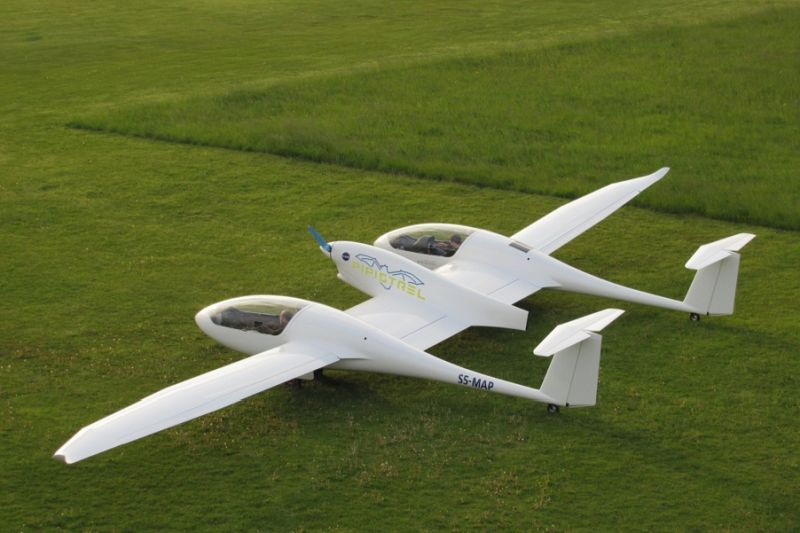 Image Source : pipistrel-aircraft.com
Image Source : pipistrel-aircraft.com
The four-seater, electric, twin fuselage Pipestrel Taurus G4 is manufactured by Slovenian firm Pipistrel. This electrically propelled ecofriendly aircraft has two separate fuselages joined together with a motor. In the middle space you will find the battery. The wingspan of the aircraft is of 21.4 meters.
12. Pipistrel’s all-electric powered aircraft takes to the skies
Pipistrel unveiled the world’s first biodiesel powered jet in 2007. The Taurus 503 features a 50+ HP Rotax 503 engine. The car is ecofriendly because it does not emit green house gases. The aircraft can accommodate two passengers. It is manufactured by well-known Slovenian aircraft Pipistrel.
13. Yuneec’s all-electric e430 airplane
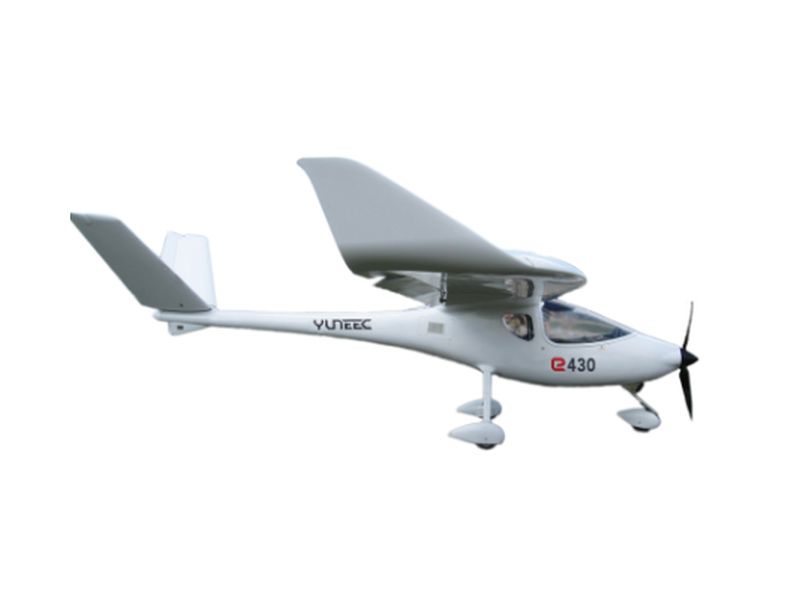 Image Source : us.yuneec.com
Image Source : us.yuneec.com
Yuneec announced in 2010 that its all-electric aircraft, the e430, will go on sale in 2011. The test fights of the two-seater plane have proved to be successful. Priced at just $89,000, this ecofriendly aircraft will give 1.5 to 3 hours of flight time. The aircraft has a 25:1 glide ratio which will help you land safety if the batteries get discharge while flying.
14. ENFICA-FC’s Rapid 200-FC electric aircraft sets speed and endurance records
The Rapid 200-FC electric aircraft designed and built by the ENFICA-FC team is light weight and emits no green house gases. On May 20, 2010, the aircraft took off for its inaugural flight. An electric hybrid system powers this aircraft. A 20 KW PEM fuel cell and a 20 KW Li-Po battery make up the hybrid system. It can attain a top speed of 130 kph.
15. Eco Tech: Personal electric aircraft takes on the sky on electric engines
This twin-engine, ultra-light aircraft is the courtesy of the University of Cambridge. A 10 KW electric motor powers this aircraft. The motor is fuelled by 12 lithium cells. The propellers are made up of carbon fiber. The plane can reach a maximum altitude of 1,700 feet and has a range of about 100 miles.


